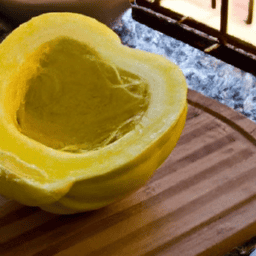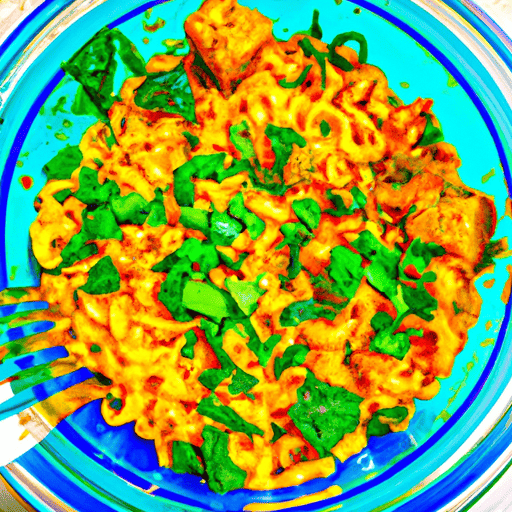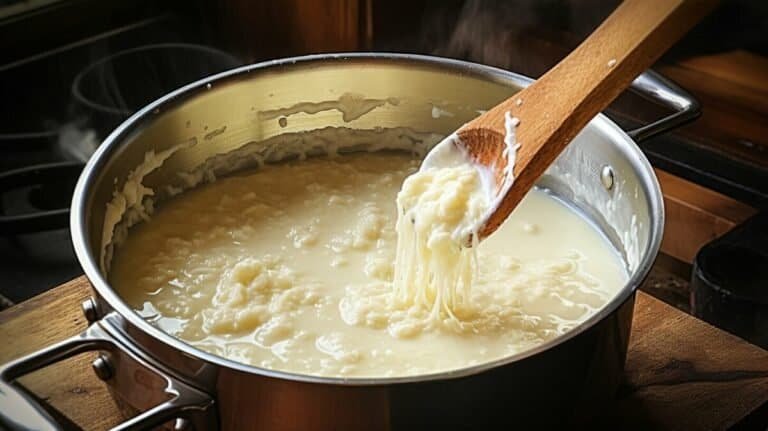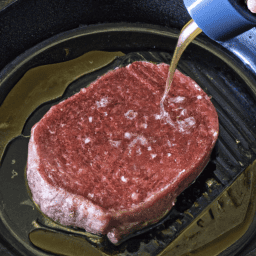How How To Cook Spaghetti Squash
Are you tired of your usual pasta options and looking for a healthier alternative? Look no further than spaghetti squash! This versatile vegetable is packed with nutrients and can be a great substitute for traditional noodles. In this article, we’ll show you the simple and easy steps to cook spaghetti squash to perfection. From preparing the squash to serving it with your favorite sauce, we’ve got you covered. Say goodbye to the days of boring meals and say hello to a delicious and nutritious new option – spaghetti squash!
Understanding Spaghetti Squash
Spaghetti squash is a remarkable vegetable that is gaining popularity among health-conscious individuals. It is a winter squash variety known for its unique stringy flesh, which resembles spaghetti noodles when cooked. Often used as a healthy substitute for pasta, spaghetti squash provides a low-calorie, gluten-free option for those looking to reduce their carbohydrate intake. Its mild, slightly nutty flavor pairs well with a variety of sauces and toppings. Whether you’re a seasoned chef or a beginner in the kitchen, learning how to cook spaghetti squash is a skill that will open up a world of culinary possibilities.
What is Spaghetti Squash?
Spaghetti squash, known scientifically as Cucurbita pepo, belongs to the same family as pumpkins and zucchinis. This oblong-shaped squash is characterized by its hard yellow or orange rind. The flesh inside is a pale yellow color and naturally forms spaghetti-like strands when cooked. This unique texture is what gives the vegetable its name.
Health Benefits of Spaghetti Squash
Besides being a delicious pasta alternative, spaghetti squash also offers a range of health benefits. It is low in calories and carbohydrates, making it an excellent choice for those seeking to manage their weight or control their blood sugar levels. The vegetable is also rich in dietary fiber, which aids in digestion and helps maintain a healthy gut. Additionally, spaghetti squash is packed with essential vitamins and minerals, such as vitamin C, vitamin A, and potassium, which contribute to overall well-being and support a strong immune system.
Choosing the Right Spaghetti Squash
When selecting spaghetti squash, there are a few factors to consider to ensure you pick the best one for your recipe. Look for squashes that are firm and heavy for their size, as this indicates freshness. Avoid any squashes with soft spots or mold. The rind should be brightly colored, without any blemishes or discoloration. It’s also essential to choose a squash of appropriate size for your needs. Smaller ones tend to be sweeter and more tender, while larger ones are ideal for feeding a crowd or creating larger portions.
Preparation Before Cooking
Before delving into the cooking process, it’s essential to gather all the necessary ingredients and prepare the squash accordingly. Having everything readily available will make the cooking experience more enjoyable and efficient.
Gathering All the Ingredients
To cook spaghetti squash, you’ll need the following ingredients:
- Spaghetti squash
- Olive oil or your preferred cooking oil
- Salt and pepper (to taste)
- Optional: additional seasonings, such as herbs or spices
These ingredients will serve as a foundation for cooking the squash and can be customized based on your personal preferences.
Preparing the Squash for Cooking
Before cooking, it’s crucial to properly prepare the spaghetti squash. Start by washing the squash thoroughly under running water to remove any dirt or debris. Pat it dry with a clean towel. Next, carefully slice off both ends of the squash using a sharp knife. This will create stable surfaces for cutting and prevent any rolling or slipping. Then, cut the squash in half lengthwise from top to bottom. Be cautious and use a firm grip while cutting to ensure safety.
Choosing Cooking Utensils and Equipment
To cook spaghetti squash, you’ll need a few essential cooking utensils and equipment. These include:
- Baking sheet or roasting pan (for oven roasting)
- Microwave-safe dish or bowl with a microwave-safe cover (for microwave cooking)
- Slow cooker or Instant Pot (for slow cooker or Instant Pot methods)
- Large pot or saucepan (for boiling method)
- Fork or tongs (for checking if the squash is cooked)
Having the appropriate utensils and equipment will make the cooking process more seamless and enjoyable.
Different Methods of Cooking
Once the preparation is complete, you can choose from various cooking methods to cook your spaghetti squash. Each method offers a slightly different result in terms of texture and flavor. Select the method that best suits your preferences and available resources.
Oven Roasting
Oven roasting is a popular method for cooking spaghetti squash as it yields a slightly caramelized and slightly nutty flavor. To roast the squash, you’ll need an oven preheated to 400°F (200°C). It takes approximately 40-50 minutes to cook the squash to perfection.
Microwave Cooking
Microwave cooking is a quick and convenient option for those short on time. It produces a softer texture and milder flavor compared to other cooking methods. To cook spaghetti squash in the microwave, you’ll need a microwave-safe dish or bowl and a microwave-safe cover. The cooking time typically ranges from 8-12 minutes, depending on the size of the squash.
Slow Cooker or Instant Pot
Using a slow cooker or an Instant Pot offers a hands-off approach to cooking spaghetti squash. This method results in a tender and evenly cooked squash with minimal effort. You’ll need either a slow cooker or an Instant Pot, depending on your preference. The cooking time varies between 2-4 hours in a slow cooker or approximately 15 minutes in an Instant Pot.
Boiling Method
Boiling is a straightforward method that requires minimal equipment. It results in a softer texture and is ideal for those who prefer a more tender squash. To boil spaghetti squash, you’ll need a large pot or saucepan filled with water. The cooking time generally ranges from 20-30 minutes.
Detailed Process of Oven Roasting
Oven roasting is a versatile and flavorful method that brings out the natural sweetness of spaghetti squash. Follow the detailed process below to achieve a perfectly roasted squash:
Preheating the Oven
Begin by preheating your oven to 400°F (200°C). This ensures that the oven reaches the desired temperature by the time you are ready to cook the squash.
Preparing the Squash
While the oven is preheating, take the prepared spaghetti squash halves and brush the cut sides with olive oil. Season them with salt and pepper or any additional seasonings of your choice. This step enhances the flavor and adds a touch of richness to the squash.
Roasting the Squash
Once the oven is preheated, place the seasoned spaghetti squash halves on a baking sheet or roasting pan, cut side up. This allows them to roast evenly. Roast the squash in the preheated oven for about 40-50 minutes or until the flesh becomes tender and easily separates into spaghetti-like strands when scraped with a fork.
Know when the Squash is Done
To check if the squash is ready, insert a fork into the flesh. If it easily pierces through, the squash is cooked. The strands should separate effortlessly when scraped with a fork, resembling cooked spaghetti noodles. Remove the squash from the oven and let it cool slightly before handling or serving.
Detailed Process of Microwave Cooking
Microwave cooking is a time-saving method suitable for those who need a quick and easy way to cook spaghetti squash. Follow the detailed process below for perfectly cooked squash:
Cutting the Squash for Microwave Cooking
Begin by cutting the prepared spaghetti squash halves into smaller sections. This allows the heat to penetrate the flesh more evenly, ensuring uniform cooking. Cut each half into quarters or smaller pieces, depending on the size of your microwave-safe dish.
Cooking Time for Microwave
Place the cut pieces of squash into a microwave-safe dish or bowl. Cover the dish with a microwave-safe lid or microwave-safe wrap. Microwave the squash on high power for 8-12 minutes, depending on the wattage of your microwave and the size of the squash. Check for doneness by poking the flesh with a fork. It should be tender and easily separate into strands.
Checking if Squash is Cooked in Microwave
Once the cooking time is up, carefully remove the dish from the microwave using oven mitts or a towel. Uncover the dish and test the squash for doneness by scraping the flesh with a fork. The strands should easily separate without any resistance. If needed, continue cooking in short intervals of 1-2 minutes until the desired tenderness is achieved.
Detailed Process for Slow Cooker or Instant Pot
Using a slow cooker or an Instant Pot provides a hands-off approach to cooking spaghetti squash. Follow the detailed process below to achieve perfectly cooked squash using these appliances:
Preparing the Squash for Slow Cooker
Cut the prepared spaghetti squash halves into smaller quarters or sections to ensure even cooking. Place the cut pieces into the slow cooker or Instant Pot, ensuring they fit comfortably without overcrowding the appliance.
Cooking Time for Slow Cooker
For slow cooker cooking, set the appliance to low heat and cook the squash for approximately 2-4 hours, depending on the size and desired tenderness. The squash is ready when the flesh is tender and easily separates into spaghetti-like strands.
Checking if Squash is Cooked in Slow Cooker
To check for doneness, simply scrape the flesh of the squash with a fork. The strands should easily separate without any resistance. If the squash is still too firm, continue cooking for additional time until the desired texture is achieved. For Instant Pot cooking, consult the manufacturer’s instructions for specific cooking times.
Detailed Process of Boiling
Boiling is a simple and straightforward method for cooking spaghetti squash. Follow the detailed process below for perfectly boiled squash:
Preparing the Squash for Boiling
Cut the prepared spaghetti squash halves into quarters or smaller sections. This allows the squash to cook more evenly. Fill a large pot or saucepan with enough water to submerge the squash completely.
Cooking Time for Boiling
Place the pot or saucepan on the stove and bring the water to a rolling boil. Gently add the cut pieces of squash to the boiling water. Reduce the heat to a simmer and cook the squash for approximately 20-30 minutes. The exact cooking time may vary depending on the size of the squash and desired tenderness.
Checking if Squash is Cooked Boiled
To test if the squash is cooked, carefully remove a piece from the pot using tongs or a slotted spoon. Pierce the flesh with a fork to check for tenderness. The fork should easily slide into the flesh, and the strands should separate effortlessly. If the squash is not yet tender, continue boiling for a few more minutes until it reaches the desired texture.
Serving Suggestions
Once your spaghetti squash is cooked to perfection, it’s time to get creative with your serving options. Here are some suggestions to make the most of your cooked squash:
Making the Spaghetti Squash into a Complete Meal
Transform your cooked spaghetti squash into a complete meal by adding protein, vegetables, and sauce. Consider tossing the strands with grilled chicken, sautéed shrimp, or cooked ground turkey for a wholesome and satisfying main course.
Side Dishes that Complement with Spaghetti Squash
Pair your spaghetti squash with delicious side dishes to enhance the overall dining experience. Serve it alongside a fresh garden salad, roasted vegetables, or garlic bread for a well-rounded and balanced meal.
How to Store Leftover Squash
If you have any leftover cooked spaghetti squash, it’s important to store it properly to maintain its freshness. Let the squash cool completely before transferring it to an airtight container or resealable bag. Store it in the refrigerator for up to 3-4 days. Reheat the squash gently in the microwave or on the stovetop when ready to enjoy the leftovers.
Frequently Asked Questions About Cooking Spaghetti Squash
As cooking spaghetti squash can be a new experience for many, it’s common to have questions and concerns. Here are answers to some frequently asked questions about cooking spaghetti squash:
What are the Common Problems and Solutions While Cooking?
Some common issues that may arise while cooking spaghetti squash include undercooking, overcooking, and difficulty separating the strands. To prevent undercooking, ensure that the squash is tender by testing it with a fork before removing it from the heat source. Overcooking can result in mushy texture, so monitor the cooking time and check for doneness periodically. Difficulties separating the strands may indicate undercooking or improper preparation. Make sure the squash is cooked until tender and use a fork to scrape the flesh properly.
Can Spaghetti Squash be Cooked Ahead of Time?
Yes, spaghetti squash can be cooked ahead of time and stored in the refrigerator for later use. Once cooked, let the squash cool completely before storing it in an airtight container or resealable bag. It can be stored in the refrigerator for up to 3-4 days.
Substitutes for Spaghetti Squash
If you’re unable to find spaghetti squash or prefer an alternative, there are a few substitutes you can consider. Zucchini noodles (zoodles), butternut squash noodles, or even store-bought cauliflower rice can be used as substitutes for spaghetti squash. Each substitute offers a unique texture and flavor profile to experiment with in your recipes.
Useful Tips for cooking Spaghetti Squash
To ensure your spaghetti squash turns out perfectly every time, here are some useful tips to keep in mind:
Seasoning Suggestions
While spaghetti squash has a mild flavor on its own, seasoning it with herbs, spices, or other seasonings can elevate the taste. Consider using garlic powder, Italian seasoning, red pepper flakes, or fresh herbs like basil or oregano to enhance the flavor of the squash.
Best Techniques for Cooking Spaghetti Squash
While there are various cooking methods available, oven roasting and microwave cooking are often considered the best techniques for cooking spaghetti squash. These methods yield desirable textures and maximize flavor profiles.
Mistakes to Avoid While Cooking Spaghetti Squash
To achieve the best results, avoid common mistakes when cooking spaghetti squash. These include overcooking, overcrowding the cooking vessel, failing to properly season the squash, and not checking for tenderness before removing it from the heat source. By being mindful of these potential pitfalls, you can ensure a successful cooking experience.
In conclusion, spaghetti squash is a versatile and nutritious vegetable that can be enjoyed as a healthy alternative to traditional pasta. From understanding the various cooking methods to following detailed step-by-step processes, you now have all the information you need to confidently cook spaghetti squash in a variety of delicious ways. So grab a spaghetti squash, gather your ingredients, and embark on a culinary adventure that will satisfy both your taste buds and your health goals!







